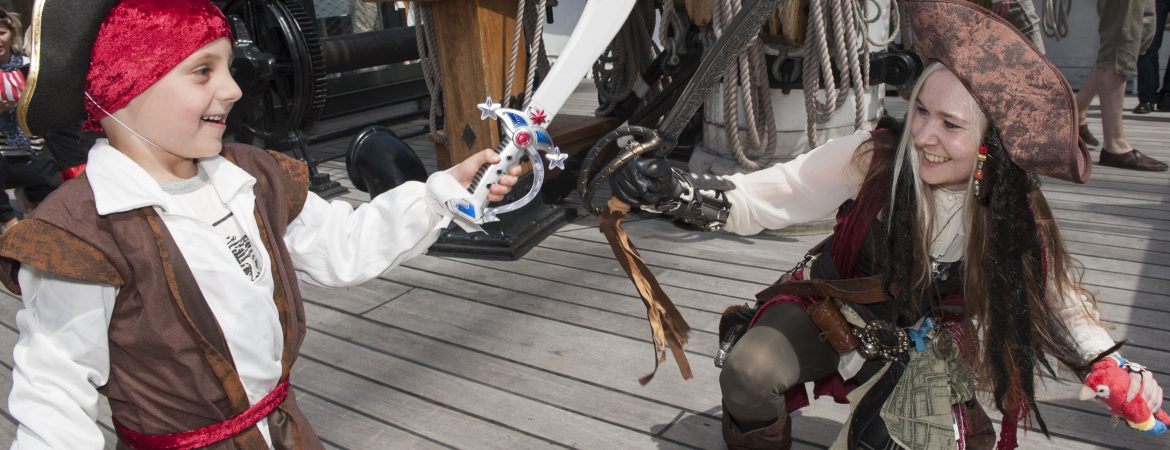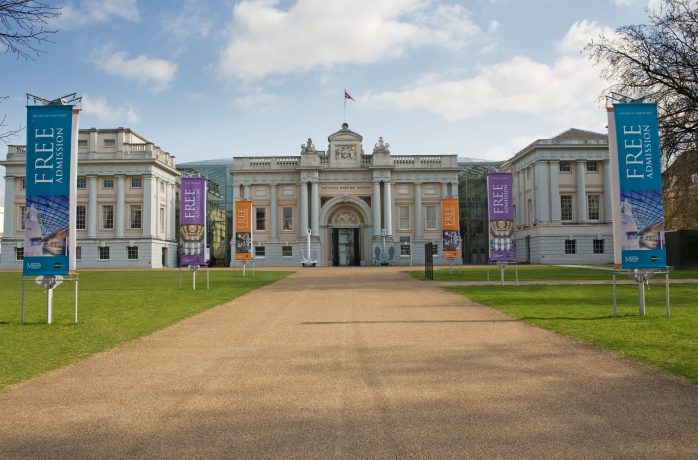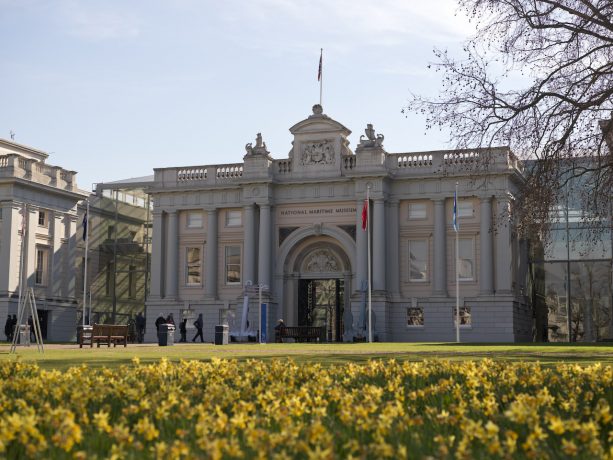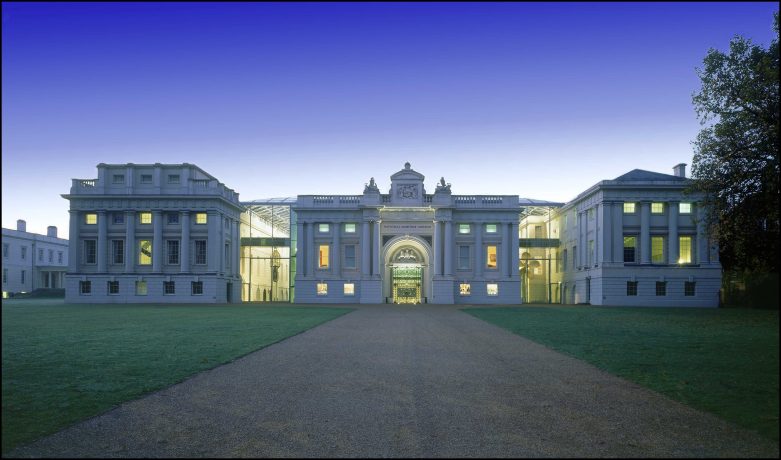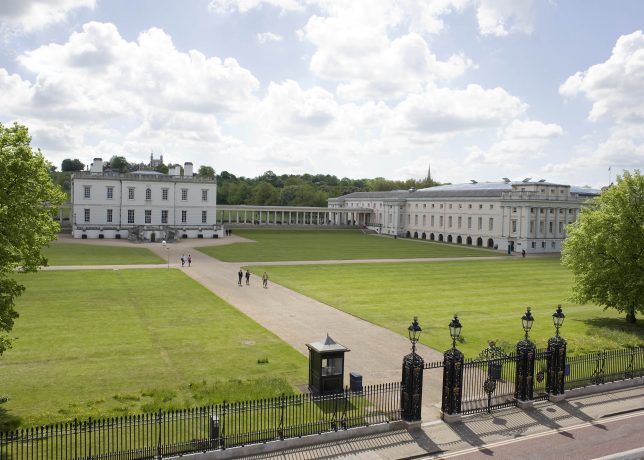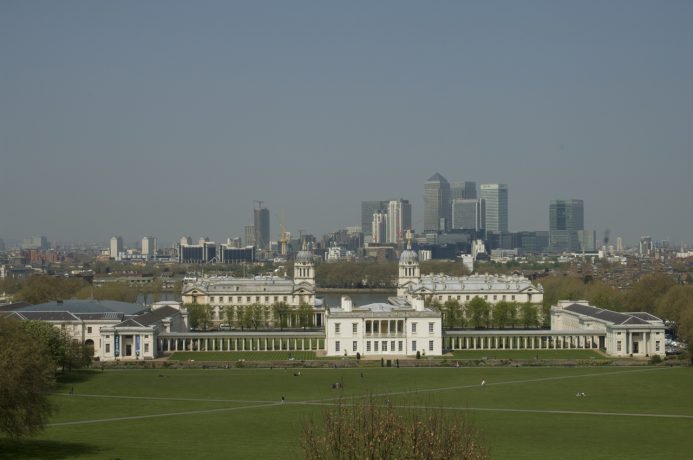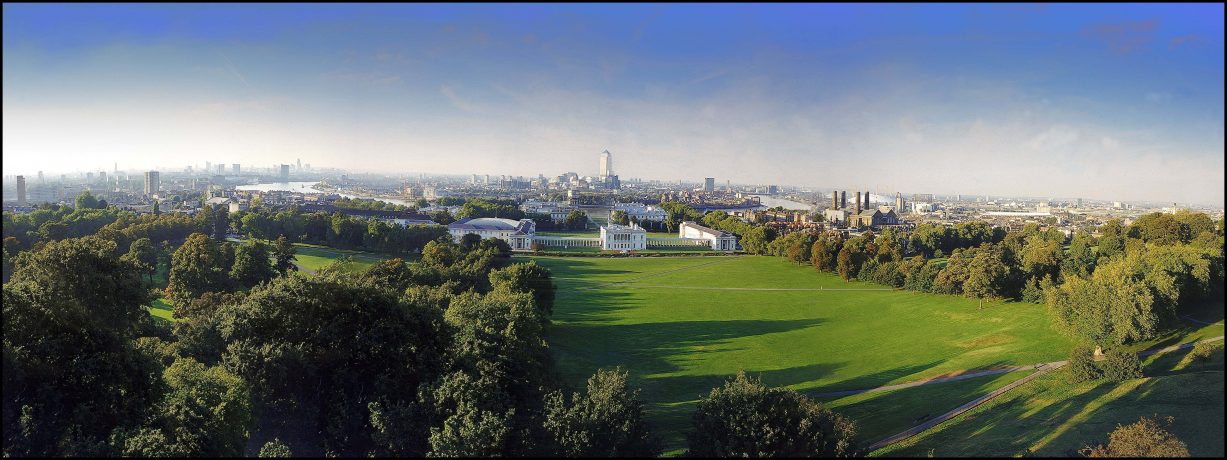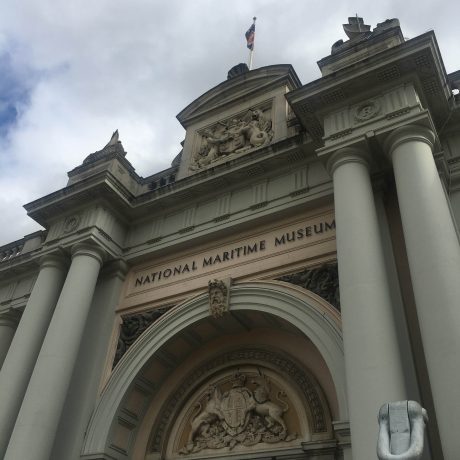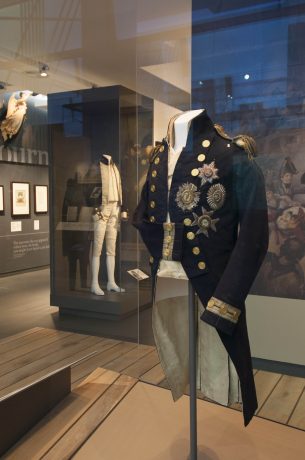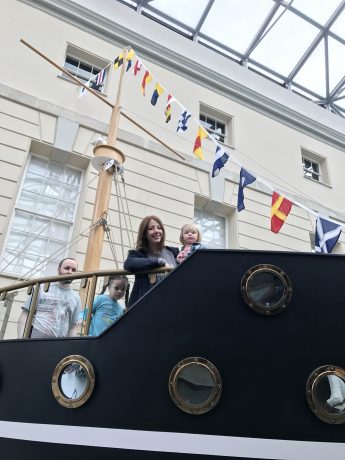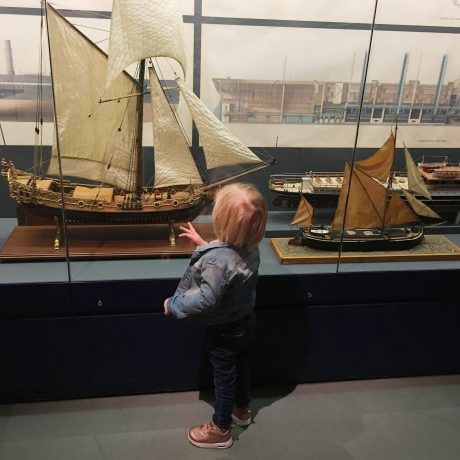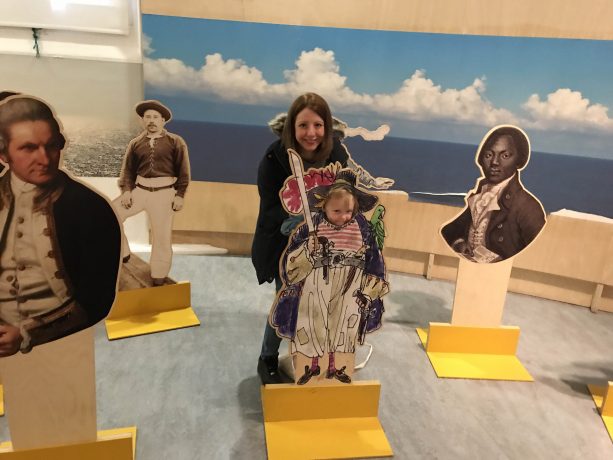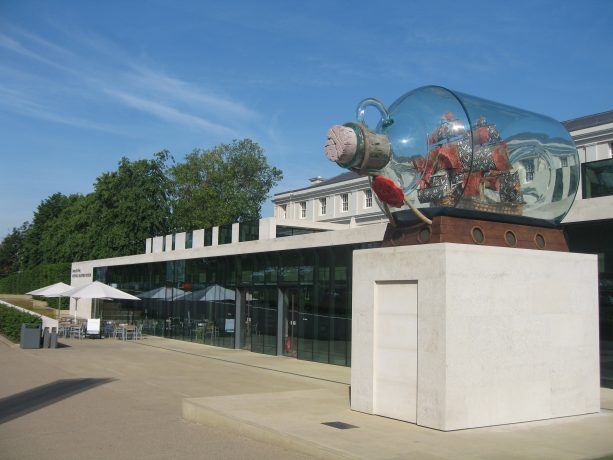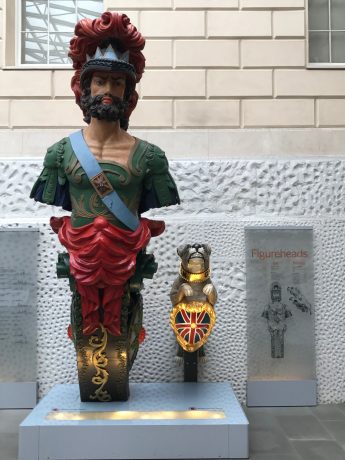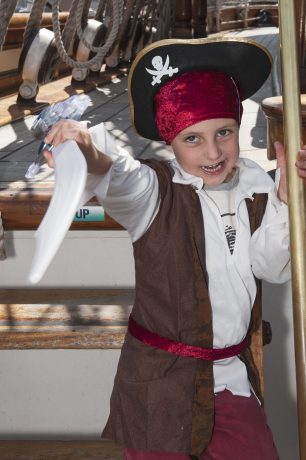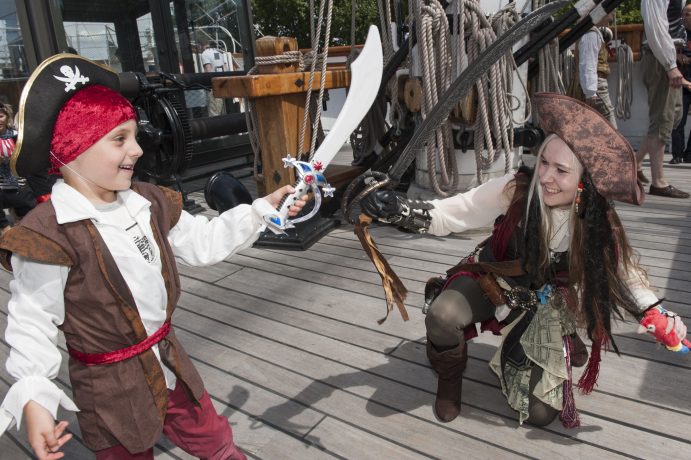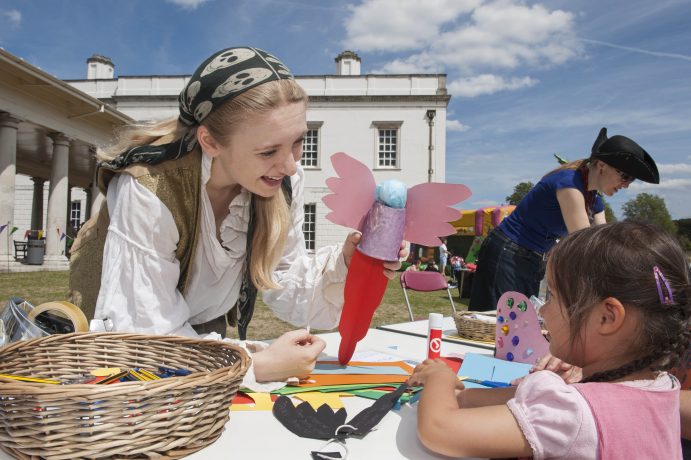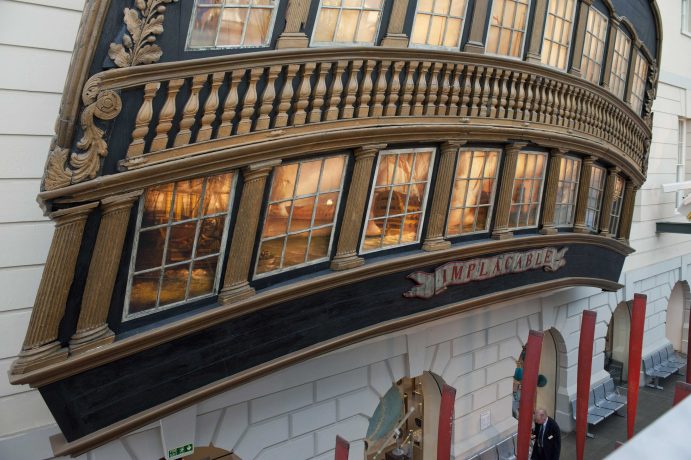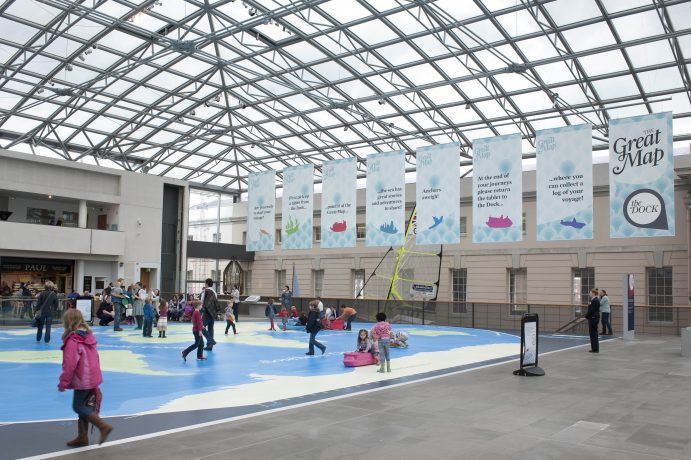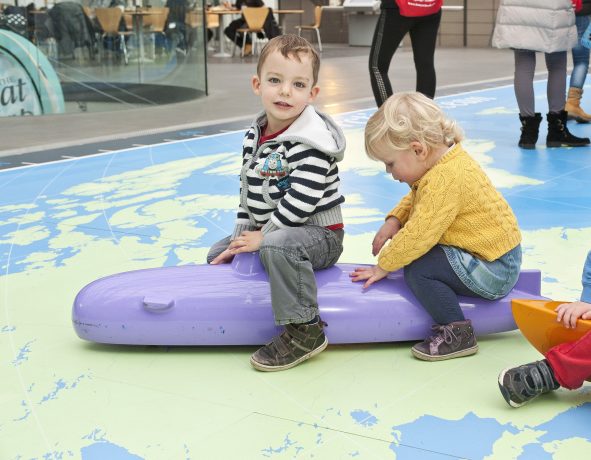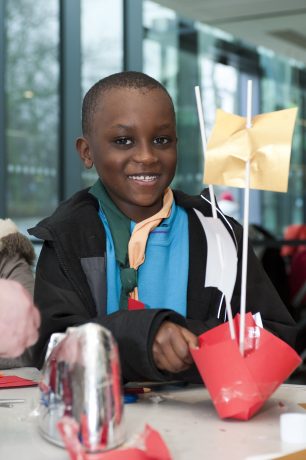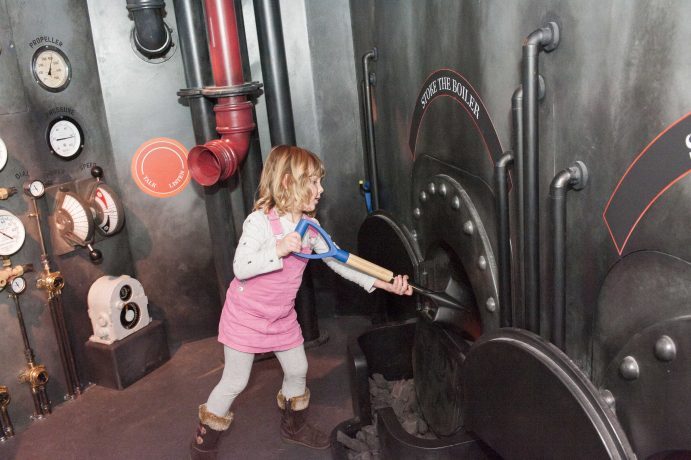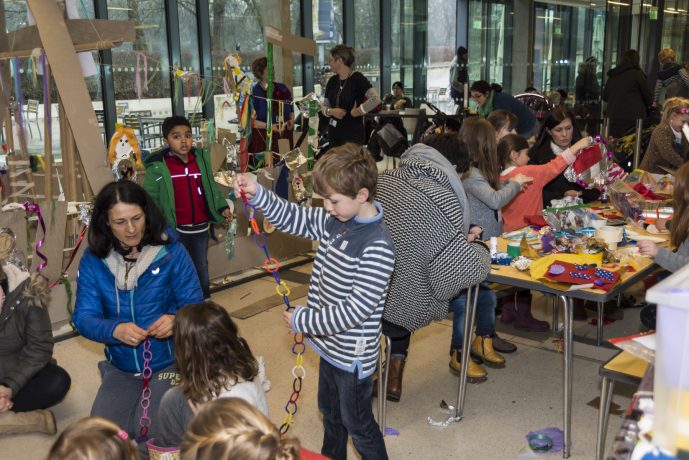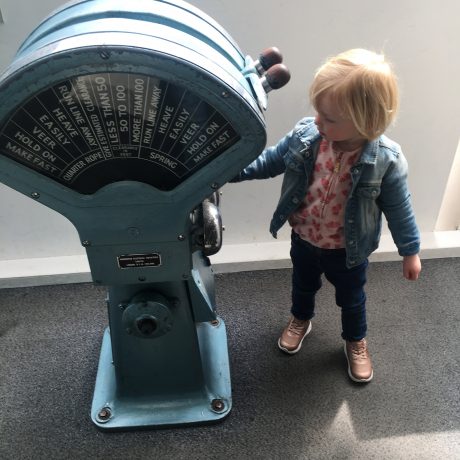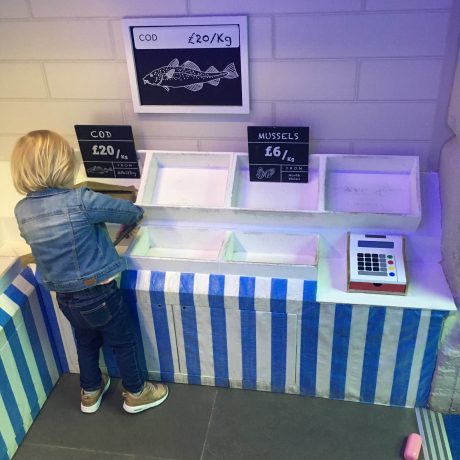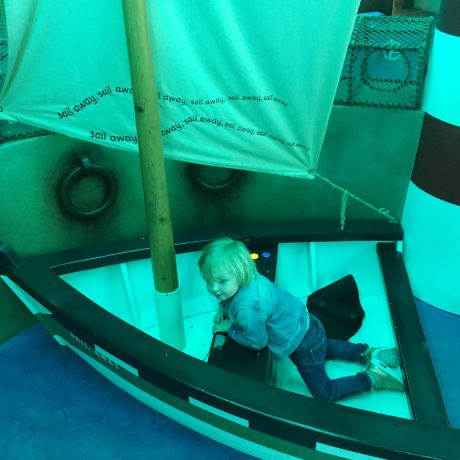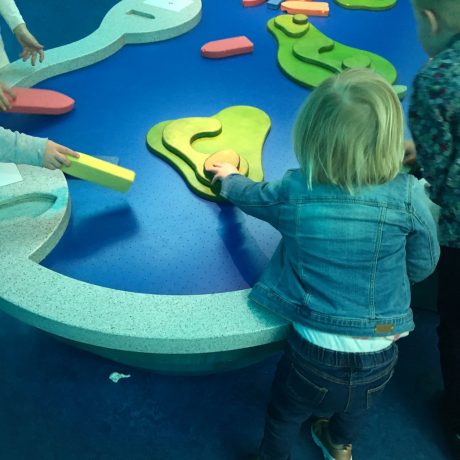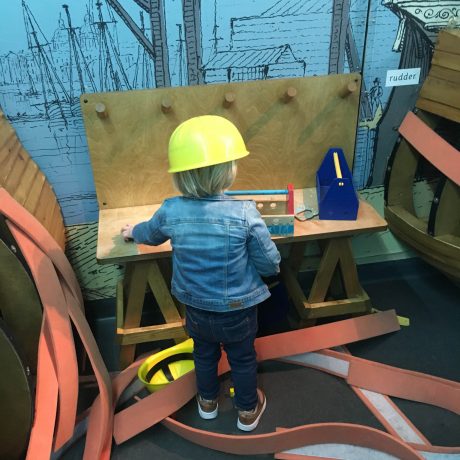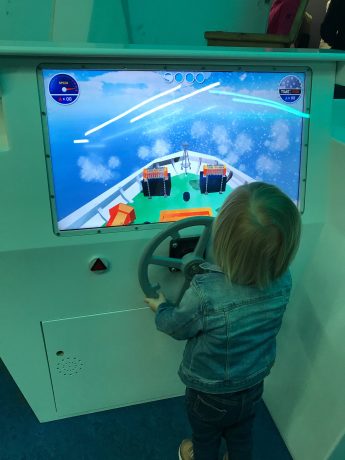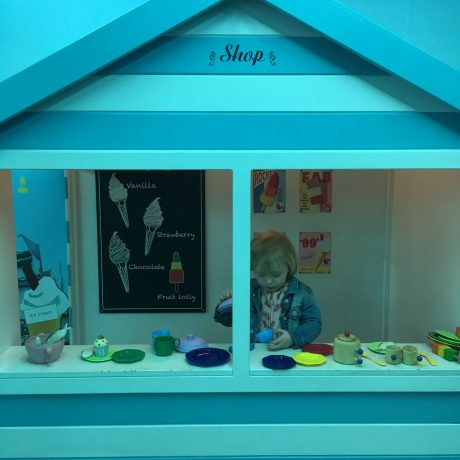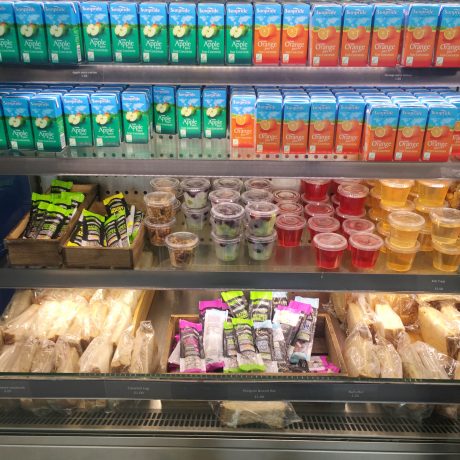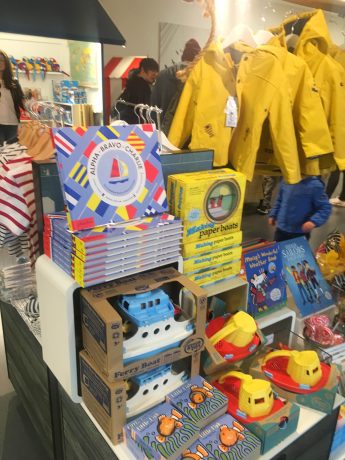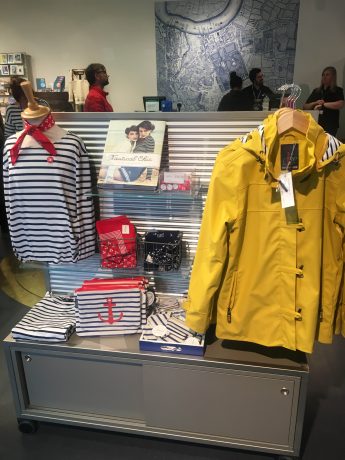The National Maritime Museum can be found in the picturesque historic town of Greenwich, London and is the largest maritime museum in the world. The museum explores 500 years of sea activity from the days of Nelson and Drake to the yachtsmen of the 21st centuries. The historic building includes 10 galleries and is located right next door to the Queens House and is in walking distance from the Cutty Sark and the Royal Observatory, all worth a look if you get the opportunity. The free entry museum first opened in 1937 and there are over 2.5 million items in its collections, which include relics from the Titanic and Nelson’s coat he wore when killed at the Battle of Trafalgar. We were very excited to explore this treasure trove of maritime wonders and learn more about naval history.
As we made our way in we first met with Prince Frederick’s State Barge, a glorious vessel encrusted in gold leaf and sculpture. The barge is 20 metres long and was launched in 1732 on the south bank of the River Thames, powered by 21 oarsmen. Being within touching distance we had to keep a close eye on our daughter who was, unsurprisingly, dazzled by its beauty. A quick detour was required so we headed for the figureheads nearby, interesting looking characters with their wide eyes and large noses. We met with the evil looking canine that fronted HMS Bulldog in her 1845 incarnation and the bearded male figure that fronted HMS Ajax.
We then headed up to the top floor where we came across the Bridge simulator. This little gem was packed full of people so we just poked our head in for a quick peek. It basically allows you to discover the art of navigation and communication at sea and includes fun activities such as firing a cannon at a pirate ship and following a helicopter rescue mission to a sinking vessel. The simulator uses the same software that is used to train real seamen, such as P&O ferry captains and is a massive draw to all those wannabe sailors, big and small. The sound of a phone ringing nearby was an immediate distraction and our daughter hurriedly ran towards it to speak to any willing participants at the other end of the room. Fortunately Daddy was there to answer her requests and it proved to be a great way to educate on how seamen communicate on board. Another form of communication on ships is the telegraph. With its moving handle it is of course very appealing to children and we learnt that by moving the handle the captain gave orders for speed and direction to the engine room.
The All Hands interactive gallery is also on this floor, which is for ages 6 to 12. We ignored the age recommendation and decided to take a look and actually the kids loved it. We met and had our pictures taken with Nelson, Columbus and Cook, sent messages in Morse code, used a ship’s steering wheel and learnt various symbols that would be vital for a captain. We found out that Nelson’s body was pickled in a barrel of brandy to preserve it on the long journey home after Trafalgar, and Columbus first went to sea at the age of 13.
The Jutland 1916 gallery marks the centenary of the Battle of Jutland. With my interest in World War history, I insisted on having a little look at this one on my own. Jutland 1916 was WW1’s greatest sea battle where almost 9,000 men lost their lives in the North Sea and I needed to contemplate this alone. The gallery presents the captivating stories of the ships and the impact the battle had on both the men who fought, and their families.
Another gallery we explored was Maritime London, which looks back to when London was one of the world’s busiest ports. In here we came across some models of ships and oil paintings of London’s dockyards. The museum houses the world’s largest ship model collection with around 3,500 items dating back to Ancient Egypt. Our daughter was rather smitten with the miniature ships and lots of exclamations of ‘whats’ and ‘whys’ followed.
Lastly we went to the brilliant Ahoy! Children’s Gallery for 0-7s, which holds lots of interactive exhibits that the kids can get their hands on. There were ship cabins for them to explore and test out the beds, captains hats, a fishmongers, a little sailing boat and a treasure chest to name a few. Our daughter absolutely loved exploring this gallery and thoroughly enjoyed her day in the life of a pirate. The shop was excellent with so many goodies for all ages. I was particularly taken with the nautical chic section and my daughter anything pirate themed.
Facilities are superb with buggy areas, changing tables in both the men and women’s toilets and lifts making it really easy to get around with a double buggy. The café has a decent selection for kids including sandwiches, jellies and fruit. There is also a good choice of hot meals and cakes, which were particularly welcome on our trip.
To extend its family appeal further the museum has various events on throughout the year and every Saturday you get the opportunity to meet a different character from history with their own fascinating story to tell about the collections.
We left feeling really fulfilled, with tired but thrilled children and a newfound passion in all things ‘sailor'. With so much on offer for families we will most definitely be returning and are really looking forward to exploring the collections further with our children in years to come.
